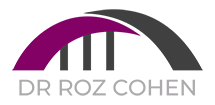Core operational alignment with DEIB Goals…..
Did you start to glaze over when you read that?
Did you wonder “what does that mean, and what does that mean for my organization?”
Well, fear not! We are going to break it down for you.
At its core, it means that your organization is walking the talk when it comes to DEIB. It’s not as simple as implementing a few random DEIB programs and expecting tangible results. Instead, it is when the core operations (such as recruiting, training, and compensation) align with the values system of the organization. With the alignment of processes and DEIB programs, employees feel more connected and empowered, workplace excellence becomes more robust, and productivity drastically improves.
So how can an organization do this, and what can stand in the way of this alignment? Here we give you a list of four “Solutions” and one “Hurdle” as you travel down this path
Solutions – Values Alignment
What are your organization’s values, and how do they align with your commitment to diversity, equity, inclusion, and belonging? DEIB is not about putting a diversity and inclusion policy in your handbook or on your website and calling it a day. It begins with looking at your organization’s values and ensuring that DEIB is considered within all that you do. For example, if you communicate that your organization wants to attract and retain a diverse workforce, have you examined your recruiting process to attract diverse candidates? Where are you posting your positions? What questions are you asking at each stage of the process?
These questions can be challenging, but it is the first step in evaluating your operations and values alignment.

Solutions – Leadership involvement
Commitment to diversity, equity, inclusion, and belonging needs to begin at the top. If the organization’s leadership is not involved from the get-go, any DEIB programs initiated will be unsustainable. Leaders who are actively engaged in supporting the effective functioning of diverse workgroups are instrumental in achieving the company’s short and long term goals have a higher success rate for DEIB goals.
Solutions – Measurement and tracking
The only way to know if your DEIB initiatives are effective is to track them over time. However, while it can feel overwhelming to figure out what to measure, it is a critical starting point.
Our DEIB consultants can work with you to develop a measurement and tracking system tailored to your business needs. More importantly, they can help you make sense of the data and provide recommendations on how to get things moving again.
Solutions – Training and support
At every level, team members will require some form of training to know about the organization’s DEIB efforts. For instance, hiring managers might need bias training so they know how to acknowledge their own bias and ensure they’re making fair hiring decisions. Department heads and team leads may also require specialized training.
Hurdle – Lack of Communication
Organizational silos occur when company goals are not communicated to the company. Usually, silos form when there is a disconnect between immediate results and the larger, long-term company goals. Departments start to create their own objectives, which may not align with what the company is trying to achieve. This can severely hinder collaboration.
Schedule a free DEIB consultation
At Socius Strategies, we’re all about helping companies connect their DEIB culture with operational strategies. We partner with them to promote collaboration and inclusivity at every stage of their strategy implementation to better meet their goal.
Schedule your free consultation by connecting with us through our contact form.

